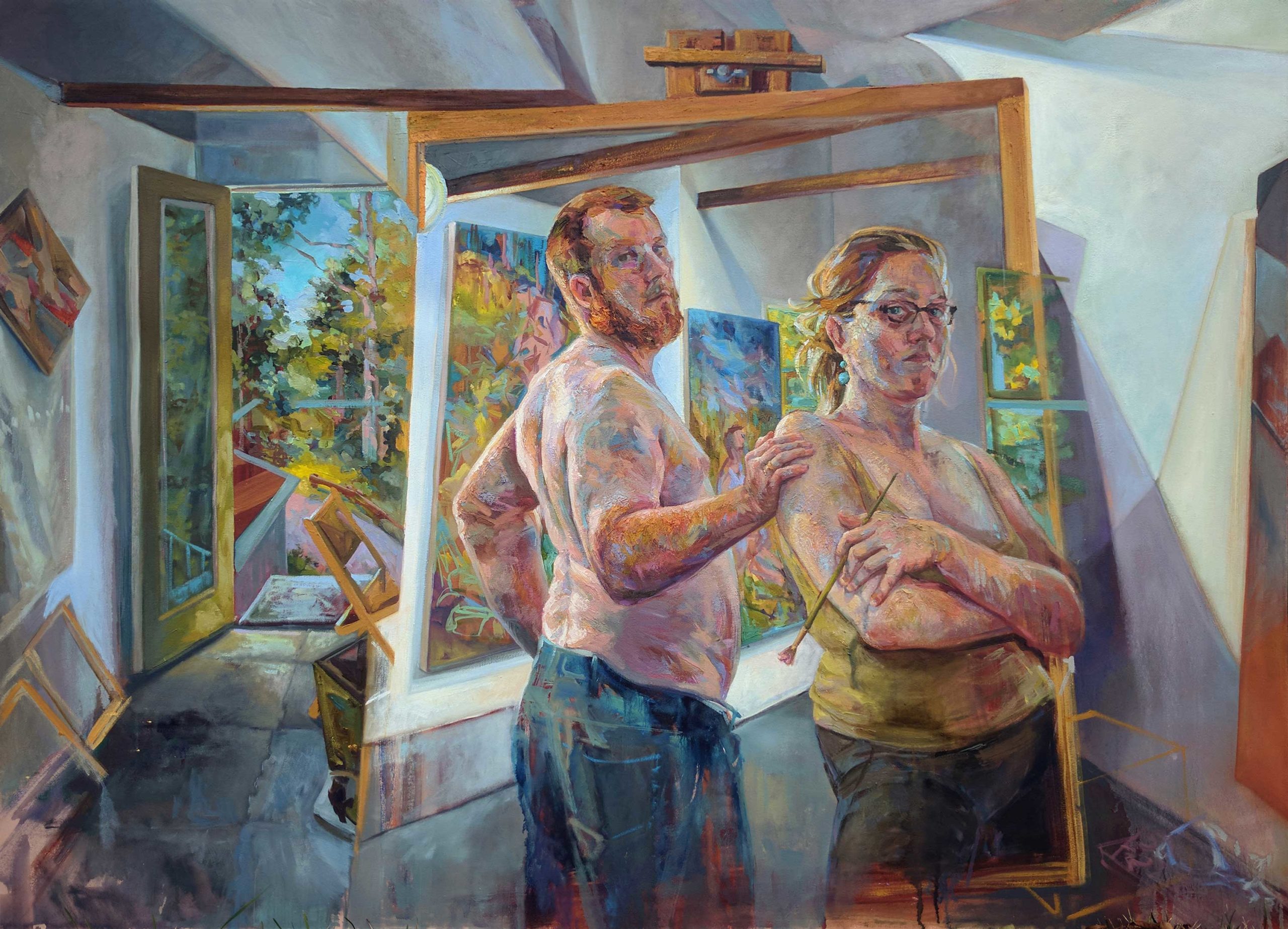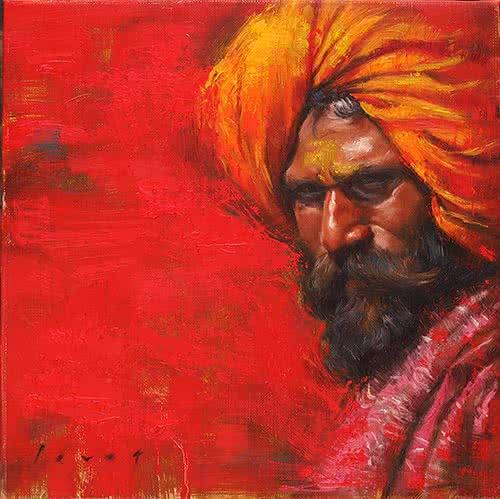Introducing the Secrets Behind Meaningful Figurative Oil Painting Styles
The Development of Metaphorical Oil Painting: Understanding Its Historic Relevance and Modern Interpretations
The evolution of figurative oil painting works as an engaging lens whereby to analyze the interaction in between artistic expression and historic context. From the thorough naturalism of the Renaissance to the stirring power of the Baroque, each age has added layers of significance and technique to this classic medium. Contemporary musicians, drawing from this abundant heritage, are now reinterpreting the human number in methods that test standard narratives. As we discover these changes, one must take into consideration how the discussion in between existing and past informs not only imaginative practice however also social representations in a progressively complex world.
Beginnings of Figurative Oil Painting
The beginnings of metaphorical oil painting can be traced back to the very early Renaissance in Europe, specifically in the 15th century. This period marked a substantial separation from the level depictions and rigid forms particular of middle ages art. Musicians began to check out naturalism, stressing the human figure and its emotional expression. The advancement of oil paint permitted for higher deepness of shade and detail, enhancing the realism and vibrancy of their job.

In this transformative period, figures were commonly illustrated within contextually rich environments, showcasing not just their physical features however likewise their psychological states. Leaders such as Jan van Eyck and Titian harnessed the tool's convenience, utilizing layering techniques to achieve luminance and structure. This development promoted the representation of elaborate fabrics and the nuances of complexion, adding to the growth of portrait and narrative scenes.
Moreover, the Renaissance emphasis on humanism cultivated a recognition for individuality, which subsequently influenced musicians to produce even more relatable and vibrant numbers - figurative oil painting. Therefore, metaphorical oil painting arised as a powerful automobile for storytelling and emotional engagement, preparing for future creative activities and styles
Key Historic Movements
Considerable historic motions have actually formed the development of metaphorical oil painting, each contributing one-of-a-kind approaches and techniques that broadened the tool's possibilities. The Renaissance marked a turning point, emphasizing realistic look and the human form, with artists like Leonardo da Vinci and Michelangelo pressing the borders of anatomical accuracy and viewpoint. Following this, the Baroque era brought dramatic contrasts of light and darkness, exhibited by Caravaggio, who infused spiritual motifs with extreme emotionality.
The 19th century introduced Romanticism and Realism, where musicians such as Delacroix and Courbet tested timeless suitables, concentrating on specific expression and everyday life. The development of Impressionism better transformed the tool by highlighting the results of light and shade, bring about a separation from traditional representation.
In the early 20th century, motions like Expressionism and Cubism redefined metaphorical painting with abstraction and the exploration of emotional depth. Each of these movements not only showed the social changes of their times but likewise laid the groundwork for contemporary analyses. The interaction in between these historic activities has actually created a rich tapestry of ideologies and designs, affecting modern-day musicians in their pursuit of capturing the human experience on canvas.
Techniques and Materials Development

Throughout the Baroque duration, methods such as chiaroscuro and sfumato emerged, improving the emotional resonance of metaphorical structures. Musicians began to trying out glazes and impasto, adjusting appearance and luminosity. By the 19th century, technologies like using pre-mixed paints in tubes revolutionized availability, allowing artists to repaint en plein air and capture the fleeting results of light.
The 20th century saw the intro of synthetic pigments and mediums, which increased the palette and changed the uniformity of oil paints. Furthermore, the expedition of brand-new application techniques, such as combination blades and brushes of differing tightness, more diversified creative expression. Collectively, these developments show the advancing relationship between materials, methods, and the imaginative vision integral in figurative oil painting.

Contemporary Interpretations
Contemporary interpretations of figurative oil painting reflect a dynamic dialogue in between practice and technology, where musicians test developed norms and explore diverse themes. This evolution manifests in numerous means, as modern artists blend classical strategies with modern principles, usually attending to social, political, and personal narratives.
Many experts attract motivation from historical jobs, yet they instill their pieces with contemporary viewpoints, using the human type as a vehicle for commentary on gender, identification, and culture. Artists significantly explore abstraction, distortion, and multimedias, which permits a wider interpretation of the number and its context.
Furthermore, making use of dazzling color schemes and unique compositions typically offers to disrupt traditional watching try this out experiences, provoking essential get more interaction from target markets. This change in focus prolongs beyond appearances; it reflects an expanding awareness of the intricacies of human experience in an interconnected world.
As figurative oil paint remains to advance, it remains an essential medium for checking out the subtleties of contemporary life, personifying both a respect for heritage and a dedication to progressive idea. The outcome is a rich tapestry of expression that reverberates with the intricacies of the modern human condition.
Influence on Modern Art
The influence of metaphorical oil painting on modern art is profound, as it has actually constantly influenced a myriad of creative activities and techniques throughout the 21st and 20th centuries. From Expressionism to Surrealism and beyond, the exploration of the human figure has stayed a central style, enabling musicians to communicate intricate feelings and stories. This focus on metaphorical depiction has actually led to a re-examination of traditional techniques, resulting in innovative methods that blend realism with abstraction.
Furthermore, contemporary artists have embraced figurative oil painting as a means to address social and political issues, utilizing the tool to test assumptions of sex, culture, and identity. The rebirth of passion in metaphorical operate in recent years reflects a wishing for link in a significantly electronic world, where human experience and emotion are extremely important.
In addition, the discussion between figurative oil paint and modern-day art is obvious in the works of artists such as Kehinde Wiley and Jenny Saville, that attract on historical referrals while infusing their items with contemporary relevance. Inevitably, metaphorical oil check my source painting proceeds to shape and redefine modern imaginative expression, highlighting its long-lasting relevance in the art world.
Verdict
The evolution of metaphorical oil paint highlights its historic value and adaptability throughout numerous artistic motions. Eventually, metaphorical oil painting remains a crucial medium for exploring the human experience, reverberating profoundly in today's electronic landscape.
The advancement of metaphorical oil painting serves as a compelling lens through which to take a look at the interaction between imaginative expression and historical context.Significant historic motions have actually formed the advancement of metaphorical oil painting, each contributing unique approaches and methods that broadened the tool's opportunities.As historic activities formed the trajectory of metaphorical oil paint, the products and strategies used by musicians have actually additionally undertaken substantial makeovers. figurative oil painting.The effect of figurative oil paint on modern-day art is extensive, as it has continually inspired a myriad of artistic activities and techniques throughout the 21st and 20th centuries.The advancement of metaphorical oil painting underscores its historical value and flexibility throughout various creative activities